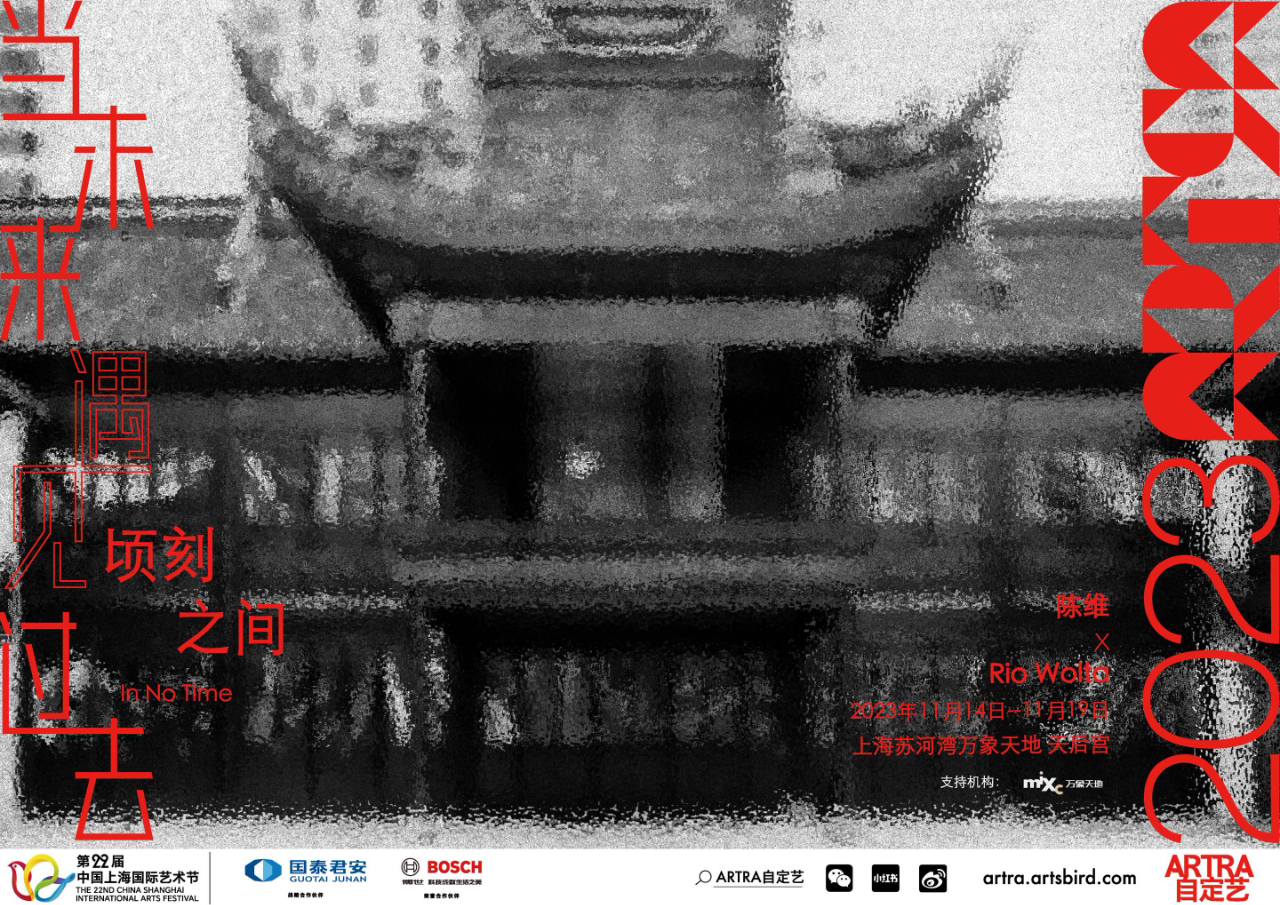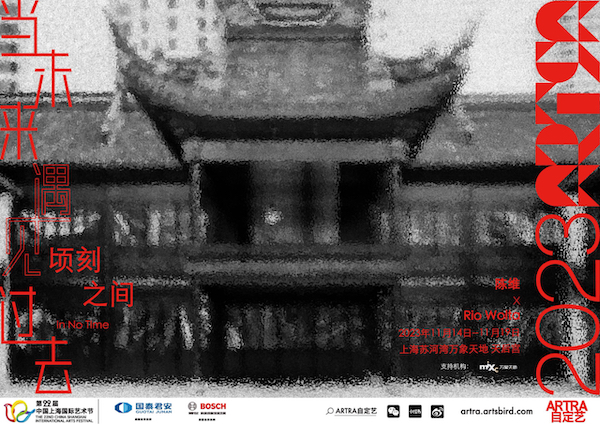DANGXIA Art Space is pleased to announce that one of our supporting programs, the third and final art installation of “When the Future Meets the Past,” titled “In No Time,” was presented by ARTRA from November 14th to 19th at the Suhewan Mixc World Tianhou Palace in Shanghai, a venue with a century of architectural history.
This project is a collaborative effort between Chinese artist Chen Wei and Swiss artist Rio Wolta. In conceptualizing the project, the duo start from the order of time, creating a specific multimedia installation to construct an environment that transcends the boundaries between memory and the future, disrupting the linear flow of time. Italian theoretical physicist and author Carlo Rovelli proposed that time does not have uniformity but varies in rhythm in different places, much like the intertwining of all things in the world, resembling the dancers in Matisse’s paintings, each existing at different points. The artists aim to explore the essence of time, leveraging its multi-structural and multi-layered characteristics. Through a combination of visual elements, music, and installations, they seek to converge different spaces and domains, allowing viewers to perceive time in various interfaces and contemplate the present while envisioning the future.
The collaborative artwork “Screen Curtain” by the two artists, positioned on the terrace, faces the expansive city square and harmonizes with the spiral-shaped dome of the Tianhou Palace. The screen curtain acts as a physical separation in space, capturing both fleeting moments and pauses in time. Crafted from materials similar to those in traditional Miao silver jewelry, the curtain resembles a cascade of silver, suspended in the partially open space. The silver ornaments symbolize objects passed down through generations, and hanging alongside them are artworks from the children of the Tongmeng Quyi Art School in Guizhou, showcasing fragments of their individual memories.
Glimmering fragments move with the wind, accompanied by audible sounds. The multimedia installation “Screen Curtain” consists of an interactive screen and sound. The screen is positioned at the center of the stage, while the sound installation is located on the exterior of the surrounding building. The sounds generated when the screen is opened blend with the music from the sound installation, conveying throughout the entire external space. Entering the screen symbolizes entering a critical point where time disappears, and people use their sense of hearing to navigate and maintain balance.
The video “In 10 Years“, created by Rio Wolta, documents scenes of a Miao girl from Guizhou navigating through various environments in the city of Shanghai. The audio component more specifically captures the artist’s random interviews with residents in Guizhou and Shanghai. Through the public’s imagination of the future, the artwork reflects on people’s perceptions of time in different environments and cultures, as well as the constraints and freedoms within their respective lives.
Chen Wei turned his lens toward the natural landscapes encountered during the field trip in Guizhou. Zhijin Cave, as a vast karst multi-type cave, was formed approximately 500,000 years ago. Chen Wei attempts to imagine ancient people and today’s observers standing in the same place, sharing the same picturesque scene. The cave presents its magnificent forms towards a future world that humans cannot reach. Facing us, it reshapes the dimension of time in its own way, and the fragments captured by the artist’s photography bring them back to the city, overlapping with the “present.” Chen Wei will collage images taken in the cave with his “New City” series. The cave has always been quietly presenting itself to people in its own way, whether in the past or not too distant future, freezing time at this point. As people constantly pursue a renewed urban life, we care so much about time, continuously shaping landscapes, sometimes without even taking the time to contemplate time. The interaction between them is a discussion about time and a dialogue of light and shadow.






